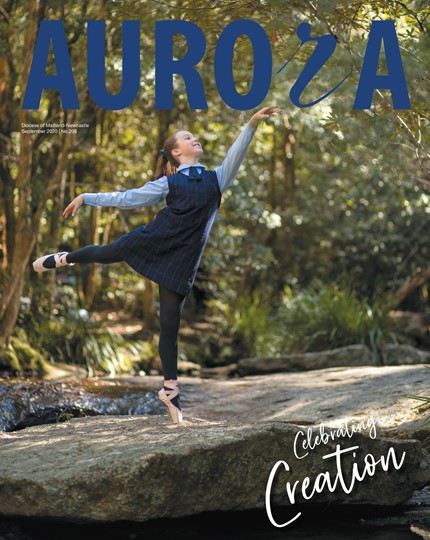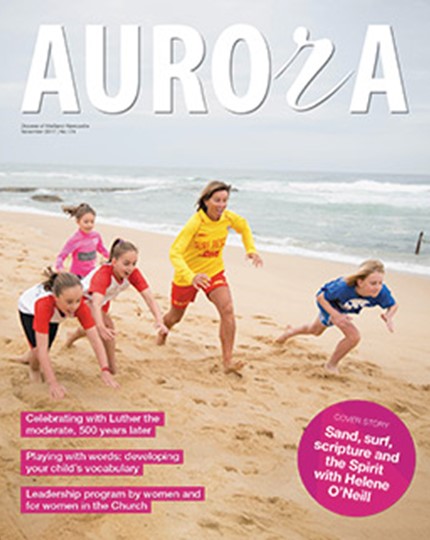Brian’s key piece of advice is, “Parents and teachers should walk arm in arm for the good of the child, even if we don’t always see eye to eye.”
Q. If I have questions or concerns about my child, who’s the best person to ask? When is it appropriate to request a meeting or escalate an issue to the assistant principal or principal?
Sometimes parents feel entitled to go straight to the principal, but the teacher’s the one developing a relationship with the child, so begin the conversation there. Principals have a big agenda and their first step in gaining accurate information is speaking to the teacher.
As parents, it’s important to make sure we develop a good relationship with our child’s teacher/s. Talk to them, support them, build them up and affirm them in front of your child. If you’re not happy with the response you get from a teacher, go to the assistant principal. He or she works directly with the teachers and would know more intimately what’s going on with eg transition programs like kindergarten commencement. In a bigger school, approach a student co-ordinator. Never, especially with kindergarten students, bad mouth a teacher in front of your child. Kindy children love their teacher and they also love their Mum and Dad. Don’t put them in an awkward position.
As a principal, I hope a parent would see me if the issue’s become serious. Make an appointment or communicate initially via email. In my experience, the first meeting with the teacher usually resolves the issue.
Q. How can I best prepare my child for kindergarten?
Toileting is big! A lot of kindy kids can be reluctant to use toilets at school so that’s something for parents to talk about at home. Tying shoelaces teaches independence. Something that adults may take for granted is the ability to open lunchboxes. That can be really hard for little ones so ‘practising’ lunch at home and ensuring your child’s having the right foods at the right time (like a sandwich for lunch) are important. Many schools will have ‘crunch and sip’, so cut up some of the fruit and vegetables at home before school begins and watch your child to ensure they are comfortable. Can your child hold a pencil and paintbrush and use scissors? Also, when you’re walking your little one to school, let him or her carry the school bag so you can see if it’s too heavy or too big.
Q. What’s the best way to deal with crying if my child doesn’t want to leave me?
Don’t hang around! Most teachers have experienced dealing with the anxiety of Mum and Dad leaving and quite often it can be the parents’ concerns that actually rub off onto the child. So if you can drop them off happily and confidently and leave, my experience is that kids quickly settle into their activities. Develop a routine for the beginning and the end of the day. Say to your child, ‘Tell me all the wonderful things you learned at school today’ and ‘What was different from yesterday?’ Once you begin those conversations, you’ll soon learn what the teacher’s doing at school and you can mirror that routine at home. Young people’s learning improves when there’s a strong positive relationship between what’s happening at school and what Mum and Dad talk about at home.
Q. How will the school help my child transition to school/a new school?
It’s important to attend information evenings and read the information provided. Many schools appoint older students as ‘buddies’ to show younger students around and help them feel more confident. Older students will often hide their anxiety and the last thing they want is Mum and Dad hanging around. One of the worst things you can do is give your child a mobile and say, ‘Text me if it’s not working out.’ Mum and Dad turn up in the foyer and the school has no idea that the child is anxious. Instead, name the Year Co-ordinator or class tutor and encourage your child to let that person know if there’s a problem. Transitioning is tough, especially from a small school to a big one. As teachers, we want the child to tell us if there’s a problem so we can help. Remind your child that he or she need not feel alone.
Q. This year, my child will be in a multi-age grouping class. How can I be guaranteed s/he won’t be disadvantaged if the teacher’s time is divided between classes?
Your child will benefit. As adults, we don’t go to work with everyone the same age and ability and we bounce off each other. When a child is in a multi-age environment, he or she is able to gain from the teacher and other students in the class and there are great learning opportunities. If you have concerns, contact the teacher.
Q. How much homework should I expect my child to be given?
Homework is a big issue and each school is different. Enquire about your school’s policy. As a principal, I would say some form of home engagement with students’ learning reinforces positive learning habits. So, whether a child’s reading with Mum and Dad or playing Scrabble, school learning is being reinforced. But don’t hesitate to ask, ‘What value does this homework have for my child?’ No school would want a child to continue struggling without help, or indeed to try to keep up with homework if there are family difficulties. Again, communicate with the school!
Q. How are Catholic schools different?
Catholic schools are distinctly and authentically Catholic and ask that the child (Catholic or not) participate in the whole life of the school − religious celebrations, liturgies, assemblies and Religious Education programs. I’ve always found that children enjoy those opportunities, Catholic or not. It’s certainly not the school’s intent to create ‘new Catholics’ but a number of our students do so because they’ve been involved in that environment. If parents are worried, they can go to the RE teacher, studies or ministry co-ordinator to learn more about the Catholic identity of the school. Teachers are only too happy to engage in these areas. If the practices of the school conflict with your family’s values, it’s probably best to send your child elsewhere. Many students find their Catholic education enriching, giving them knowledge and skills to be able to cope better with life’s demands and pressures within a Catholic context.
To learn more, visit Catholic Identity on the Catholic Schools Office (CSO) website. The CSO website offers information on many aspects of Catholic education.




























































































